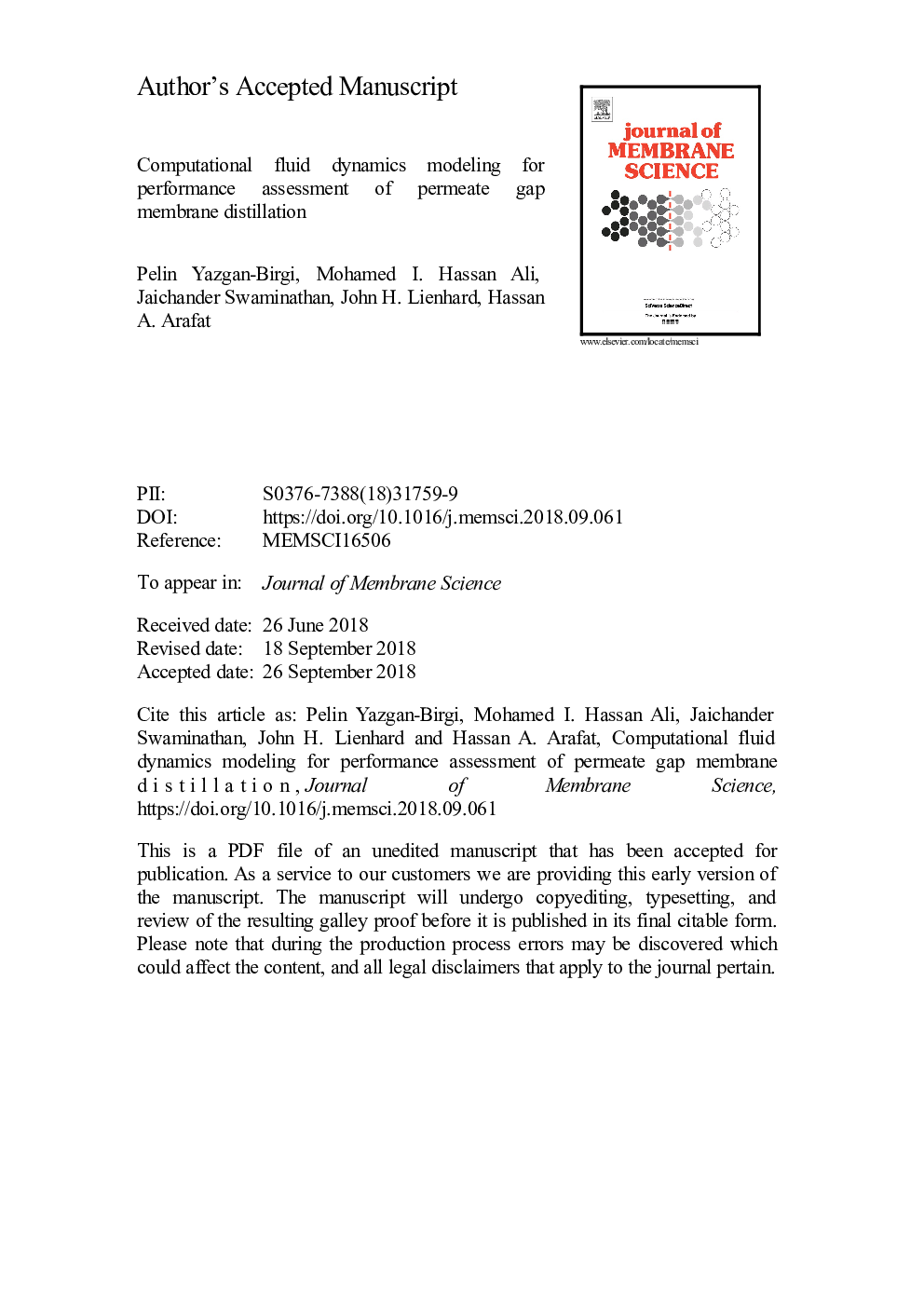| Article ID | Journal | Published Year | Pages | File Type |
|---|---|---|---|---|
| 11020841 | Journal of Membrane Science | 2018 | 38 Pages |
Abstract
The critical factors and interactions which affect the module-level performance of permeate gap membrane distillation (PGMD) were investigated. A three-dimensional computational fluid dynamics (CFD) model was developed for the PGMD configuration, and the model was validated using experimental data. The realizable k- ε turbulence model was applied for the flow in the feed and coolant channels. A two-level full factorial design tool was utilized to plan additional simulation trials to examine the effects of four selected parameters (i.e., factors) on permeate flux and thermal efficiency, both of which represent performance indicators of PGMD. Permeate gap conductivity (kgap), permeate gap thickness (δgap), module length (Lmodule), and membrane distillation coefficient (Bm) were the selected factors for the analysis. The effect of each factor and their interactions were evaluated. Bm was found to be the most influential factor for both performance indicators, followed by kgap and δgap. The factorial analysis indicated that the influence of each variable depends on its interactions with other factors. The effect of kgap was more significant for membranes with higher Bm because the gap resistance becomes dominant at high Bm. Similarly, δgap is inversely proportional to the permeate flux and only significant for membranes with high Bm.
Related Topics
Physical Sciences and Engineering
Chemical Engineering
Filtration and Separation
Authors
Pelin Yazgan-Birgi, Mohamed I. Hassan Ali, Jaichander Swaminathan, John H. V, Hassan A. Arafat,
